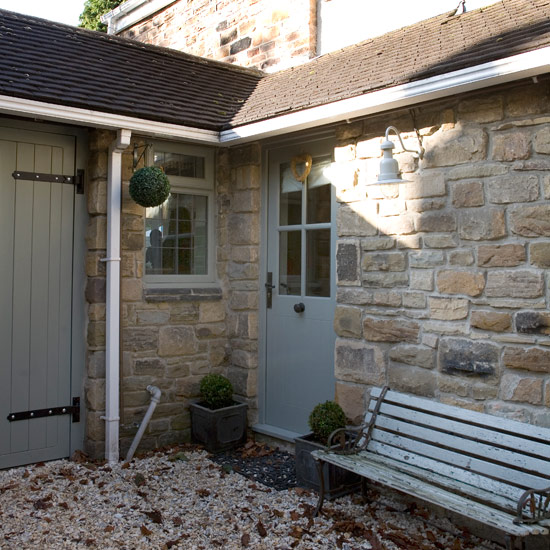This month, we've been thoroughly inspired by Farrow and Ball's recent brochure cover.
So enthusiastic are we that we've decided to bring you a full tutorial of how to make this charming, slightly shabbied look your own.
You will need:
Wooden Chairs
This is one of those looks that achieves a lot of wow with very little outlay. You get a lot of bang for your buck, as it were. The two sample pots we've chosen are Farrow and Ball India Yellow and Farrow and Ball Blazer and came to a grand total of £7.90.
Start off by giving each chair a very light sand down. This is because, while we're aiming for a chipped look, it's important to be able to control when and where the paint will flake away. Sanding provides what's called a 'key', which allows the paint to adhere.
Mark off areas to paint using masking tape. On each chair, we created a slightly different effect by masking off different thicknesses of stripes. These are created by simply layering the masking tape strips to block off your desired widths.
Paint the exposed surfaces using one of the sample pots.
Before the paint is fully dry, remove the masking tape and repeat the process for your second colour. Once the paint has had a chance to set, you can get to work distressing!
Here are three top tips for creating a bespoke time-worn look.
{As always, do contact us for further information.
We're here to help!}
Don't paint right up to the edges of all the struts. Leave a small gap, then blend in the paint and the bare wood by repeatedly applying, pressing and removing the tape.
Different kinds of tape will pull off varying amounts of paint. Experiment with parcel tape, for example, for a more heavily distressed feel.
And, lastly, vary the stripe width and placement on each chair for a quirky mix and match look.
When you're happy with the level of distressing on each chair, carefully apply clear exterior wood varnish all over the chairs. We used Osmo 410 for a lovely sheen.
...but you can choose from matt or satin varnishes too.
Enjoy sitting on your stylish new seating arrangement, whilst revelling in the fact that the makeover cost only
a few pounds!









































.JPG)





